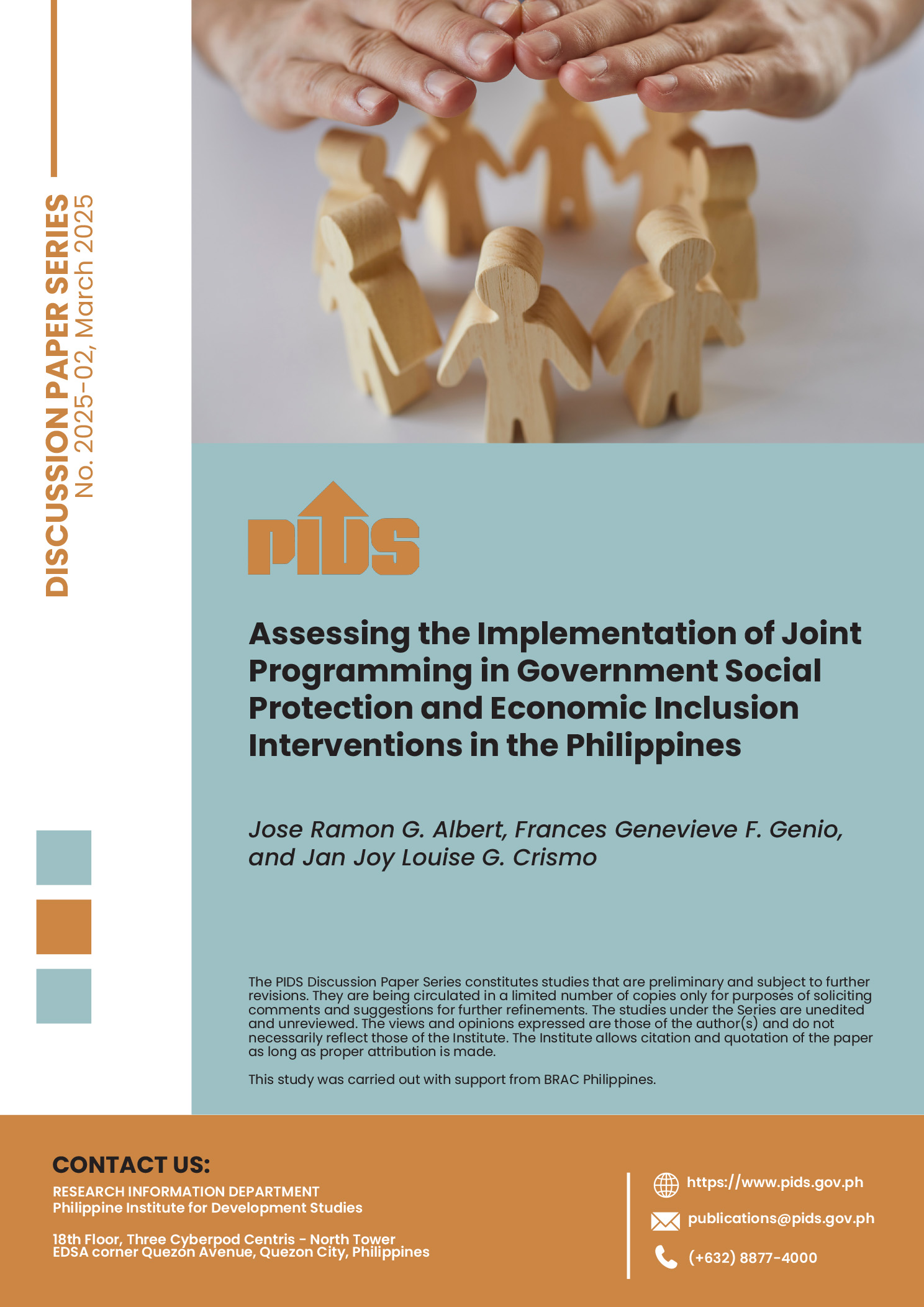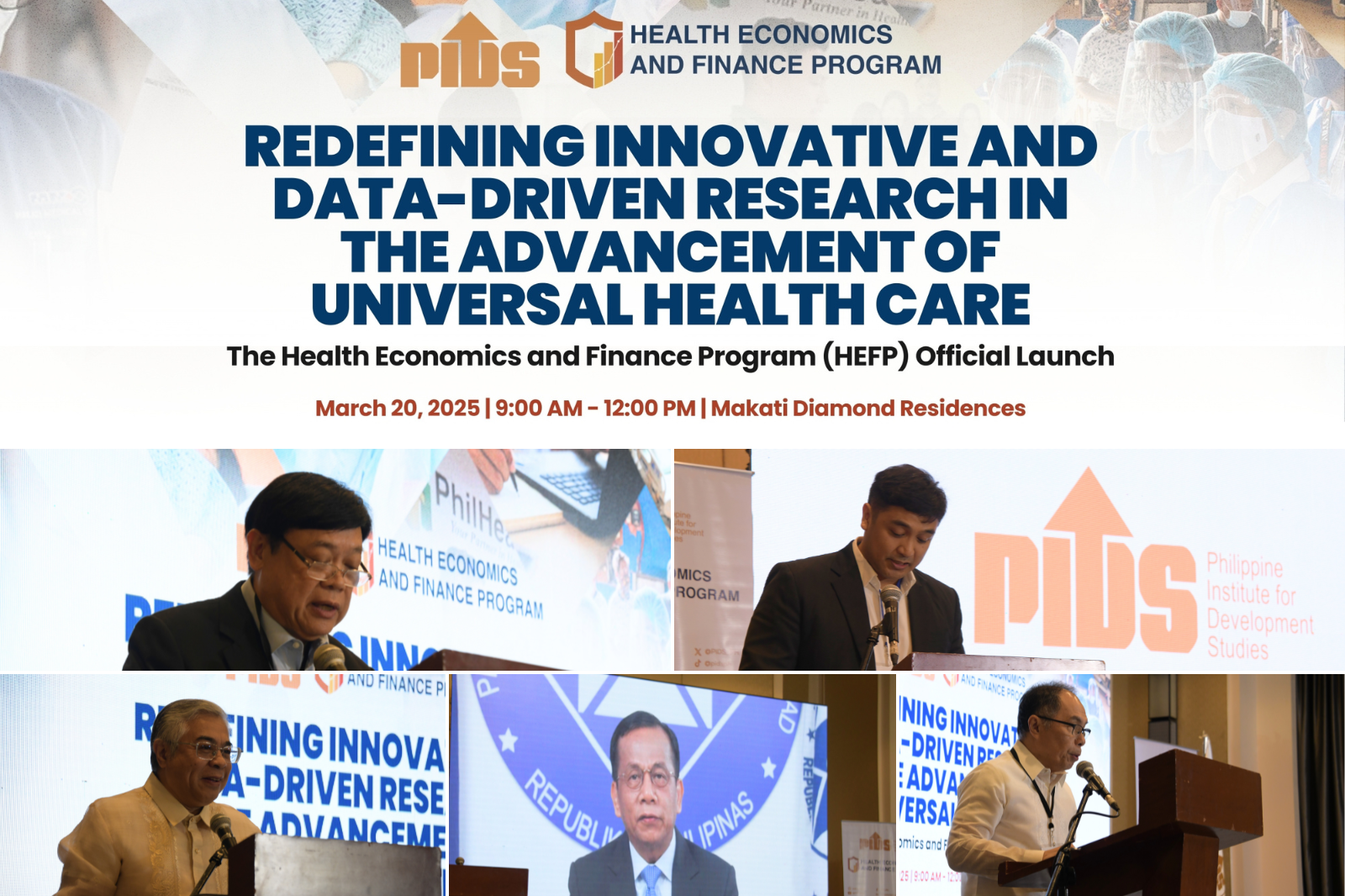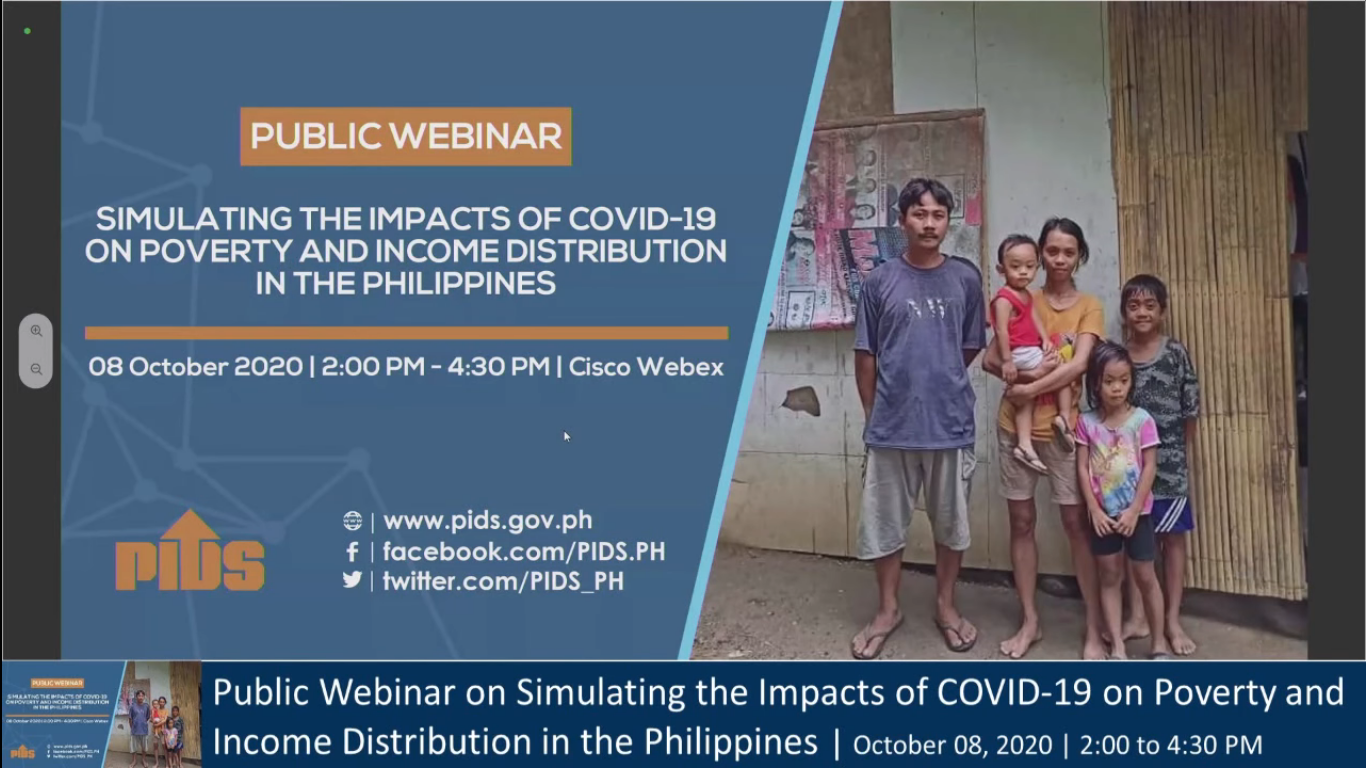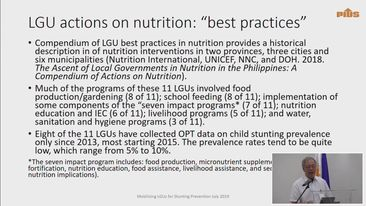IF GDP growth were a sport, it would be one of the bloodiest—boxing. And Metro Manila would be its undefeated heavyweight champion.
For many decades, Metro Manila has carried the country’s economy on its shoulders. And every punch, every jab works toward winning the battle against poverty.
But, just like all boxers after years of fighting on the ring, Metro Manila’s punches are getting slower, its footwork getting sloppy. It’s not as agile as it used to be. Many even say Metro Manila is losing its charm.
In the latest Gross Regional Domestic Product (GRDP) data released by the Philippine Statistics Authority (PSA), Metro Manila or the National Capital Region (NCR) posted a growth of only 4.8 percent in 2018. This is slower than the 6.2-percent GRDP growth posted in 2017 and the 7.4 percent in 2016.
These rates mirrored the performance of the Philippine economy in 2018 and 2017 when gross domestic product reached only 6.2 percent and 6.7 percent, respectively. These levels were nowhere near the GDP growth of 7.1 percent in 2013 and 7.6 percent in 2010.
These growth rates may have resulted to a weak jab against poverty as the megacity posted a slower reduction in poverty levels. Based on the first semester results of the Family Income and Expenditure Survey (FIES), three districts of the NCR posted increases in poverty.
The third district of Metro Manila, composed of Caloocan, Malabon, Navotas and Valenzuela, saw the highest increase in poverty of 1.57 percentage points to 8.1 percent in the first semester of 2018 from 6.5 percent in the same period of 2015.
Cause to increase
OTHER districts that saw increases were the first district, which is the City of Manila, and the fourth district, which is composed of Las Piñas, Makati, Muntinlupa, Parañaque, Pasay, Pateros and Taguig.
The first district saw poverty increase by 0.91 percentage points to 5.7 percent in in the first half of 2018 from 4.8 percent in the same period of 2015. The fourth district, meanwhile, saw poverty increase by 0.13 percentage points to 3.9 percent from 3.8 percent.
Only the second district of Metro Manila (composed of the cities of Mandaluyong, Marikina, Pasig, Quezon and San Juan) posted a decrease in poverty. Data showed District 2 saw poverty decrease to 3.5 percent in the first half of 2018 from 3.9 percent the same period in 2015.
As of this writing, the National Economic and Development Authority (Neda) could not offer an explanation what ailed the Philippine economy’s prizefighter that caused poverty to increase in the NCR. Neda Undersecretary for Regional Development Adoracion S. Navarro merely said “we’re still gathering possible explanations from the regions; will update once ready.”
Economists such as Ateneo Center for Economic Research and Development (Acerd) Director Alvin P. Ang said given the multidimensionality of poverty, there are many factors that affect poverty incidence, which include factors beyond income such as education, housing, health and other similar factors.
However, Ang said one factor that could improve poverty eradication and boost the economy is job generation. This means more Filipinos need to secure decent jobs.
But these types of employment are not always available, even in a bustling city like Metro Manila.
Average job creation
BASED on the preliminary 2018 annual Labor and Employment Status data of the PSA, Metro Manila had one of the highest unemployment rates at 6.6 percent in 2018. This was higher than the average jobless rate nationwide at 5.3 percent last year, representing 2.3 million Filipinos.
Citing data from the PSA, nongovernment Ibon Foundation Inc. earlier said average annual job creation for 2017 and 2018 was only 81,000. The number of employed only increased by 162,000 from 41 million in 2016 to 41.2 million in 2018.
The increase is below the annual average job creation under the administration of Corazon C. Aquino in 1987 to 1992 at 810,000 and Ramos in 1993 to 1998 at 489,000; Estrada in 1999 to 2001 at 842,000; Arroyo in 2002 to 2010 at 764,000; and Benigno Aquino III in 2011 to 2016 at 827,000 jobs.
Ibon Foundation Head Jose Enrique A. Africa has claimed that wages remained flat in the past 10.5 years. Africa added this indicated that while the growth in labor productivity has been increasing, it has mainly benefitted companies and not workers.
“The simplest way for growth to be inclusive is to increase wages,” Africa said. “For us, jobless growth is a reality, wage-less growth is also a reality. And again it’s a structural problem. If there is no determination on how the economy is run, this will continue.”
However, Action for Economic Reform (AER) Coordinator Filomeno S. Sta. Ana III disagreed with Ibon Foundation and told the BusinessMirror that there were still many jobs generated. He said that was an increase among full time and wage workers.
Important refocusing
PSA data showed the annual employment rate in 2018 was estimated at 94.7 percent, higher than the 94.3 percent in 2017.
Data revealed the total employed persons in 2018 was approximately 41.2 million.
Workers in the services sector composed the largest proportion of the employed persons. These workers made up 56.6 percent of the total employed in 2018.
The data also showed that among them, those engaged in the wholesale and retail trade; repair of motor vehicles and motorcycles accounted the largest proportion (19.4 percent) of workers.
In 2017, workers in services sector accounted for 56.3 percent of the total employed, with those engaged in wholesale and retail trade; repair of motor vehicles and motorcycles made up the largest proportion (19.6 percent) of workers.
“To be accurate, the GRDP grew but at a slower rate than previous year,” Sta. Ana said. “But even the growth slowdown is relatively higher than previous growth episodes.”
He explained that “whereas before we had jobless growth, sustained high growth since 2012 underpinned by structural reforms like the tax reform, infrastructure spending, public finance management and now rice tariffication is leading to an early stage of economic transformation.”
“This restructuring is making growth more responsive to poverty reduction and job creation,” he added.
Apart from jobs, Sta. Ana said it was important to look at the role of remittances to economic growth and poverty reduction. This has been one of the driving forces of GRDP in other regions apart from Metro Manila.
Assumptions, CCT
BASED on PSA data, the fastest-growing regions in 2018 were Eastern Visayas, Bicol, Zamboanga Peninsula and Mimaropa. These regions saw the highest increase in their GRDPs in 2018.
Eastern Visayas saw its GRDP increase by 4.1 percentage points to 5.9 percent in 2018 from 1.8 percent 2017 while Bicol region, which posted the highest GRDP in 2018, saw a 3.9 percentage point growth to 8.9 percent in 2018 from 5 percent in 2017.
amboanga Peninsula also posted the highest increase in GRDP at 3.9 percentage points to 6.3 percent in 2018 from 2.4 percent in 2017 while Mimaropa saw a 3.4-percentage-point growth in its GRDP to 8.6 percent from 5.2 percent.
This has translated to slower poverty incidence rates in at least three of these regions. PSA data showed poverty incidence slowed in Eastern Visayas to 37.6 percent in the first semester of 2018 from 38.7 percent in 2017; Bicol, 28 percent from 36 percent; and Mimaropa (Mindoro, Marinduque, Romblon and Palawan), 20.6 percent from 24.4 percent. Poverty in Zamboanga Peninsula, however, increased to 39.5 percent in the first six months of 2018 from 33.9 percent during the period in 2017.
“Higher GDP is not enough to lower poverty,” Ang said. “We can’t assume one causes the other strongly.”
Meanwhile, the government has recently institutionalized the Conditional Cash Transfer (CCT) program. This was seen as a victory for millions of households relying on the program. The program is also being credited by the government as instrumental to the decline in the country’s poverty incidence.
The CCT program, which began under the Arroyo administration, has been expanded prior to its institutionalization. It’s known locally as the Pantawid Pamilyang Pilipino program (4Ps; bridging program for the Filipino family) and gives cash grants to poor families if they send their children to school, visit health centers and attend family-development sessions.
No anti-poor program
SINCE the program’s inception, the number of CCT partner-beneficiaries increased from 340,000 to more than 4.4 million at the end of 2015—making it the fourth-largest CCT after programs in India, Brazil and Mexico. The program has expanded rapidly since it began in 2008 and has evolved over time based on lessons and experience.
“Whatever reduction in 2018 is traction from the previous efforts, likely CCT, which was upscaled in the previous government, is already yielding its impact in reducing poverty and inequality,” Philippine Institute for Development Studies (Pids) Senior Research Fellow Jose Ramon Albert told the BusinessMirror.
However, Ang said the Philippines should stop looking at CCTs as a poverty-reduction measure. Ang said it is a “human capital investment program” meant “to prevent people from falling into difficulty and poverty.”
In order to measure poverty from a wider perspective, the PSA came up with a multidimensional poverty index (MPI). The MPI aims to measure poverty through deprivations in the following: education; health and nutrition; housing, water and sanitation; and employment.
The PSA said one is “multidimensionally deprived” or poor if he or she is deprived in at least one third or four of the 13 indicators. Results of the PSA survey show that multidimensionally deprived Filipinos—or the proportion of Filipinos deprived in at least four out of the 13 indicators—were estimated at 23.9 percent in 2016 and 17.3 percent in 2017.
Betting vs poverty
AFTER decades of cracking the right code to beat the odds in solving poverty, the government now seemed to have the proper combination of policies to finally uplift millions of poor families in the Philippines.
The recently released Fies showed a huge cut in poverty incidence nationwide to 21 percent in the first half of 2018 from 27.6 percent in the same period in 2015. With this result, the government can heave a sigh of relief, in the meantime, as they look like they are on the right track to meeting its poverty target of 14 percent by 2022.
Philippine government officials are unanimous that the long-time ailment cannot be fully cured with just one magic pill taken overnight.
According to these officials, good social protection fundamentals, along with the 4Ps, significantly contributed in poverty reduction in the country.
Under the P3.662-trillion 2019 General Appropriations Act, the government has allotted P89.75 million for the 4Ps, of which P82 million is allotted for cash grants including the amount of rice subsidy.
Introduced during the Arroyo administration and carried by the succeeding administrations, 4Ps mandates the government to implement Conditional Cash Transfers, ranging from P300 per child to P700 per child (depending on his/her educational level) to eligible poor households.
Now an official added function of the Department of Social Welfare and Development, the government is now mandated under the law to give CCTs to beneficiaries for a maximum period of seven years.
Extolling 4Ps
HOWEVER, the government deemed it rational to only give the dole-out if recipient beneficiaries will meet certain conditions, such as availing themselves of health services or sending their children to school. In this way, the government aims to hit two birds with one stone in the long run since the children of these beneficiaries are expected to help their family rise from poverty after they get the proper education and be able to work in the future.
Christian R. Deloria, director IV of the DSWD National Convergence and Technical Support Unit, believes that government spending more money for the poor through the 4Ps was one of the best decisions it has made.
“Because if you don’t spend money for the poor, they will remain poor. But in the last 10 years, since the 4Ps program was implemented, we’ve been spending more money for them, and we are now reaping the benefits,” Deloria told the BusinessMirror. “And at the same time that the economy is developing, we have more money going into these programs and the more money we invest in them, [in] human development, there are more people getting out of poverty.”
Refurbished buying power
ACCORDING to Deloria, beneficiaries of the CCT program now have extra money to spend on putting up small businesses, which in turn could boost the local economy.
He added the total amount of money the government spends especially in low-income municipalities, under the 4Ps is even sometimes 90-percent bigger compared to the amount that these municipalities receive under their internal revenue allotment.
“So just imagine the inflow of this money in the local area, municipality,” Deloria said. “There’s more actually literally more [money] coming in and this would incentivize small business to pop out so they are generating more income.”
He added that since some 4Ps beneficiaries already addressed some of the basic needs, “they have some little extra money.
“Because if you get the incentive of P1,200 per month, supposedly the money you have, you are not going to spend that anymore for that because it’s being provided for you,” Deloria said. “So the money you have, some [people] are very enterprising, and they even set up their own sari-sari store with that small capital.”
Aside from the Conditional Cash Transfers, beneficiaries also receive a fixed monthly health and nutrition grant worth at least P750 to encourage them to use health services of the government.
Negative impact
MEANWHILE, the 4Ps beneficiaries also receive Unconditional Cash Transfers, or UCTs, tied as part of the government’s mitigating efforts for imposing higher excise taxes for several products under the Package 1 of the Tax Reform for Acceleration and Inclusion Law.
Deloria explained that the UCT and the CCT two differ in purpose: the former is specifically meant to counter the negative impact of a government policy while the CCT is really intended to help poor households get out of poverty.
While beneficiaries said CCTs help to make ends meet, Deloria said there is no guarantee that the success achieved through the implementation of CCTs in certain areas will be replicated in others as well.
Not every nook and cranny of the country can be reached by the modalities of the cash transfer, via automated teller machines or wire transfer.
“There are a lot of [geographically isolated and depressed areas] in the Philippines and it is very expensive to implement the [on-site] cash transfer there,” he said estimating that at least 15 percent of the 4.1 million 4Ps household beneficiaries are living in these areas.
Besides, the economic benefits of the cash transfers also depend on the market institutions that are in place in the particular area.
“It is not happening in [some areas] because the market is so diverse. So it really depends on the advantages of each area, the market institutions that are put in place,” he said. “In some areas, there is no market [activity] there so they buy their stuff somewhere else so that is where the benefits go.”
Agency heads views
MOREOVER, officials from DSWD, National Anti-Poverty Commission (NAPC) and Philippine Commission for the Urban Poor (PCUP) admitted budget constraints also play a factor in the implementation of poverty-alleviation programs.
NAPC Secretary and Lead Convenor Noel K. Felongco revealed they were supposed to experience an P18-million budget cut in 2019, which was allocated for their prototype of rapid community-based monitoring system (RCBMS). Fortunately, Felongco said the budget cut was later on restored after they made representations in the Senate.
Felongco said that through the RCBMS, they will be able to know the situation per household if they are able to know if a particular household is receiving any help from the government to meet their basic needs.
“This rapid community-based monitoring system is a real-time data collection system wherein we can collect data from each barangay,” he said in an interview with BusinessMirror. “We will have an inventory which is important for the planning and budgeting of our anti-poverty programs.”
However, the same could not be said of PCUP.
While the PCUP proposed to have P220-million budget for 2019, the national government was only able to grant them P180 million.
Due to this cut, PCUP Commissioner Norman B. Baloro lamented that they would not be able to have a data banking system to determine the actual number of urban poor nationwide.
The most important thing, what is lacking in our office is really a data banking system for the number of urban poor sector or the urban poor communities that we have in the country,” Baloro said noting that what they currently have is just the number of families who have been accredited by PCUP.
Data as basis
THE data the PCUP could acquire was supposed to serve as their basis in crafting particular programs to address the needs of the urban poor.
[The system] might cost us a lot or expensive but I think it would also help us sooner or later,” Baloro said. “It will help us come up with a very comprehensive program for this particular people because you already have a data of how many people are in need of this assistance from the government, especially from the PCUP.”
While the overall poverty incidence painted a rosier future for the country, there are still some provinces and cities which unfortunately saw worsening poverty incidence.
Based on BusinessMirror computations, the highest increases in poverty incidence were recorded in Basilan and Isabela City, where it worsened to 65.3 percent and 52.6 percent, respectively.
The rate rose by 36.5 percentage points from 28.8 percent in Basilan and by 31.97 percentage points in Isabela City compared to the first half of 2015.
Other provinces and cities that recorded increases in poverty incidence were Tawi-Tawi which recorded a percentage-point increase of 6.34; Bataan, 5.79; Davao Oriental, 4.68; Batanes, 3.26; Zamboanga del Sur, 2.02; Biliran, 1.96; and Zambales, 1.91.
The provinces of Benguet, Maguindanao, Eastern Samar and Misamis Oriental and Metro Manila’s fourth district are other areas that posted a slight increase in poverty incidence.
Expanding reach
IN order to dig deeper into on the root causes of poverty, Cabinet Secretary Karlo Alexei B. Nograles told the BusinessMirror that the government has already mapped out the 32 priority provinces wherein it may step in and lend its resources to help.
These priority provinces were identified in the Human Development and Poverty Reduction Cluster based on the highest magnitude of poverty and highest poverty incidence as well as according to Neda’s spatial strategy.
“Poverty and hunger is a complex issue. The first thing we have to accept is it’s not a one-size-fits-all approach here, that’s why we mapped out the provinces because there might be a specific concern that they are currently facing, which is why they are having a hard time, [such as] lack of resources, peace and order, security problem, insurgency problem, factors like that,” Nograles said.
President Duterte also knew that war and conflict can hugely dent the poverty- and hunger-reduction efforts of government, Nograles said.
“Once we solve the peace problem, it will be easy for us to achieve progress. Like I said, if there is conflict in an area, the government will be having a hard time stepping in,” Nograles added. “No matter what interventions we do, as long as there is war and conflict, we will be having a hard time getting them out of poverty.”
Taking stock
ASIDE from war and conflict, DSWD and NAPC also pointed to migration as one the potential causes of worsening poverty, especially in three districts in Metro Manila.
Both NAPC and DSWD said the underdevelopment of some areas led to the migration problem in Metro Manila.
“There are a lot of opportunities in the urban areas, in the countryside not so much. A lot of them go here, thinking that their lives are better off here but when they are already here, [sometimes] they become victims of labor abuses,” Felongco said.
For his part, Deloria said population moves where economic centers are so the government must find ways to develop adjacent regions to make sure that job employment is available to the general population.
“Urban migration is something that we really have to address because we cannot not let people come in these areas because that’s part of their freedom to travel,” he added. Deloria also noted that having more people concentrated in certain areas will not be good in the long run since it would be hard for the government for all of their basic needs.
But for PCUP and NAPC, some local government units are also partly to blame for worsening poverty reduction in their areas.
To address this, Felongco said they have been talking with Department of the Interior and Local Government so that another memorandum circular or an executive order will be issued to direct local government units to use their 20 percent of internal revenue allotment, which was supposedly intended for development projects and for poverty-reduction activities instead of using these funds for construction of basketball courts or roads.
Task-force creation
ALTHOUGH Feloria and Deloria expressed confidence that poverty reduction continued until the second half of 2018, they both conceded that the reduction would not be as significant like what happened during the first part of the year due to inflation.
Nograles believes the government will be prioritizing anti-poverty programs, including reduction in hunger incidence, especially as Duterte is expected to sign soon an order creating the task force on zero hunger.
“If the first half was concentrated on anti-crime, anti-drugs, anti-insurgency and peace process in Mindanao, although that already included our anti-poverty efforts since we have managed the peace and security problems very well already, and records will bear us out, and even public sentiment will bear us out that the President was known for that, the second half will now be concentrated on anti-poverty and anti-hunger programs,” he said.
Economic fighters
THE battle for poverty and inequality continues, and with Metro Manila losing its steam, one thing is clear: the Philippines needs a new economic champion. It can no longer rely on Metro Manila’s unblemished track record of keeping the economy afloat.
The megacity can continue to deliver its punches but other economic fighters must contribute to win not just the battle but the war against underdevelopment and depravity.
Other regions will need step up and try punching above their weight. Local government officials recently elected are the new coaches of these featherweights. It is hoped their direction would be enough to turn these amateurs into economic prizefighters in the years to come.












